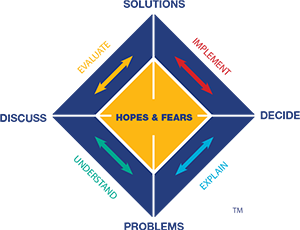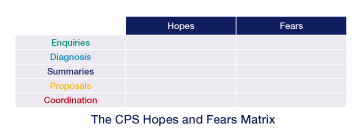Hopes and Fears
-
-

In all areas of problem solving, there are hopes and fears, particularly if we have not done the task before, or to the new level demanded. Our approach to our work is coloured by these emotions.
Some people are more driven by their hopes than their fears, and may take risky decisions as a result. Others see dangers, sometimes when the risks are very low, and are therefore more guided by their fears. Those who succeed take a communication and problem path that enables them to chart their way effectively between hopes and fears. Rudyard Kipling summed it up well in his poem when he said.
“If you can keep your head when all about you, others are losing theirs, then you will succeed.”
The five major skills are central to charting solid ground between hopes and fears. At one level, they will enable you to assess your hopes realistically and develop a sensible plan of action. At the other level, they will address your fears by enabling you to understand and explain the situation, plus come up with practical suggestions.
-
Helen Keller
We all live our life, hoping for the best and trying to conquer our fears when problems arise. Another fine exemplar of someone to whom this happened, is Helen Keller. As a young child, she became deaf and blind, due to an illness. Clearly, she had many fears and struggled hard to live a normal life. But, it was her hopes, which transformed her future.
She decided to use her time and energy to support and assist those who had disabilities. Helen was a tireless worker, particularly for those who suffered from blindness and other handicaps. Her hopes led to action that gained support and funding, to improve the living conditions of those in need. In this avatar video, you will hear about some of her hopes and fears.
-
Applications

Look at one of the projects that you are currently conducting. It is useful to make a list of the hopes and fears that are associated with the issues.
Then apply the CPS skills to assess the action required, as hopes and fears are often figments of the mind. They both require a plan to improve the chances of the hopes coming true, and to reduce the chances of the fears coming true.
-